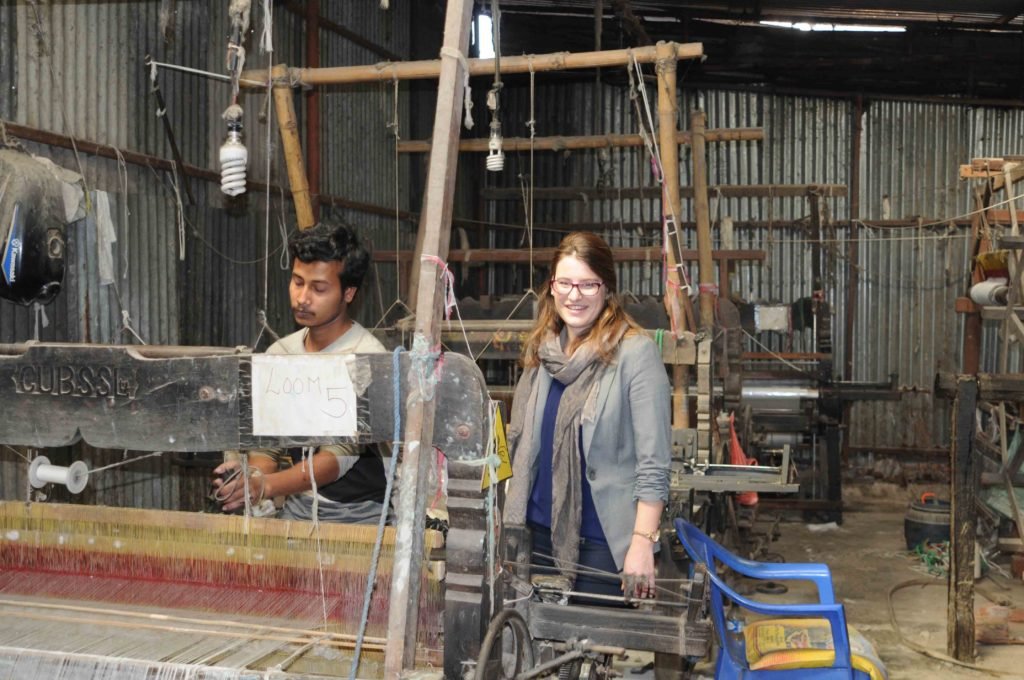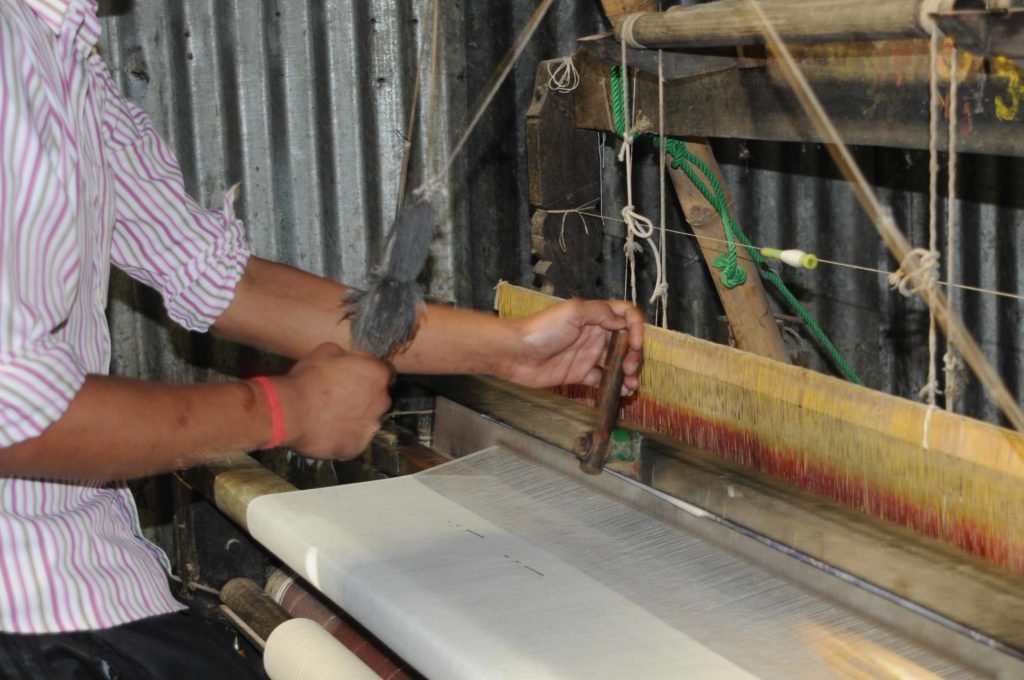Cashmere production
How is our cashmere produced?

Sustainability and fair working conditions are more important than ever. And that is what we are committed to every day. With our local business partners, we have found people to whom our standards are just as important as they are to us. Only when everyone, from the farmer to the weaver to the retailer, benefits from the value chain, only then can a unique product with history and love be created.
We know the country and the people in Nepal very well, that’s why we help where we think it makes sense and not only where the media and the big relief organizations are present. Help where it arrives and is directly implemented by us.
In addition to our aid projects, we naturally also want to give something back to our employees. These factors are particularly important for us:
- All employees, whether weavers, salespersons in Nepal or dyers, must receive at least 20% more than the minimum wage in Nepal.
- We order several times a year, so that employees receive longer-term employment contracts
- We have set up a social fund that supports local people with money in special disasters, such as the devastating earthquake in 2015.
- We want to offer Nepalis a future in their own country and are doing everything we can to dissuade as many young Nepalis as possible from traveling to the Arab Emirates as guest workers.
- At least 2 times a year I personally travel to Nepal and spend several days in the manufactory.
How is cashmere obtained and processed?
Clothing has been made from cashmere wool since 1000 years before Christ. This helped the Asians to great wealth, especially in the Middle Ages. After that, factories settled in Europe and most of the fabrics were processed by machines.
In the Himalayas, one sometimes feels somewhat transported back to the Middle Ages; every single process is still done by hand. On the one hand, this protects the animals, on the other hand, many more people can benefit from the trade chain. But let’s start with the goat herder; we get our cashmere wool mostly from Mongolia, there goat farmers own relatively manageable and small herds, likewise many villagers in the mountain regions keep a cashmere goat as pets and milk suppliers, because they like to defy the adverse temperatures. As soon as the thermometer climbs a little above the positive degrees again in the spring, the goats are combed out. This is a very gentle extraction of the wool in contrast to the well-known shearing. However, this procedure takes much longer and is thus no longer affordable for the industrialized countries. However, with combing, unlike shearing, the crimp as well as the length of the fibers are not affected and the cashmere is even more valuable. After that, the fibers are sorted, which is mostly women’s work, as they have the trained eye for it.
After that the wool comes to Kathmandu to the spinning mill. There it is spun into the finest twisted yarns.
The yarns arrive at the weaving mill, where they are first wound onto smaller bobbins. This is already done almost mechanically for the conditions: on a converted bicycle wheel, the thread is wound from the large bobbin onto the small one. Then the 4200 warp threads are individually stretched in the frame. Also on the loom everything happens manually. Piano-like pedals are used to lift the right threads at the right moment, creating beautiful patterns. The Schiffli is shot rhythmically through the warp threads.
After the weaving process, all scarves are checked by hand and dyed individually. The steaming process gives the scarf the final touch before it starts its long journey to Switzerland.
Jacquard production
A work of art of textile history, precision and knowledge combined in a dreamlike scarf made of purest cashmere. Only natural grown cashmere hair dyes are used for these scarves, for this reason it makes them not only one of the most elaborate products in weaving, but also the sources of supply are very small and rare. Because only the finest, longest and therefore most precious threads are suitable for the jacquard patterns. 4200 threads have to be linked with the punch card, all this is pure manual work and requires immense knowledge and sensitivity. This technique requires extreme skill, which unfortunately is increasingly forgotten. Our factory in Nepal is one of the few in the world that still masters this art. Only a few of these gorgeous scarves are still made each year. Together with the manufactory, we are constantly looking for solutions to be able to maintain this fantastic tradition.







Visit to cashmere weaving mill in Nepal 







